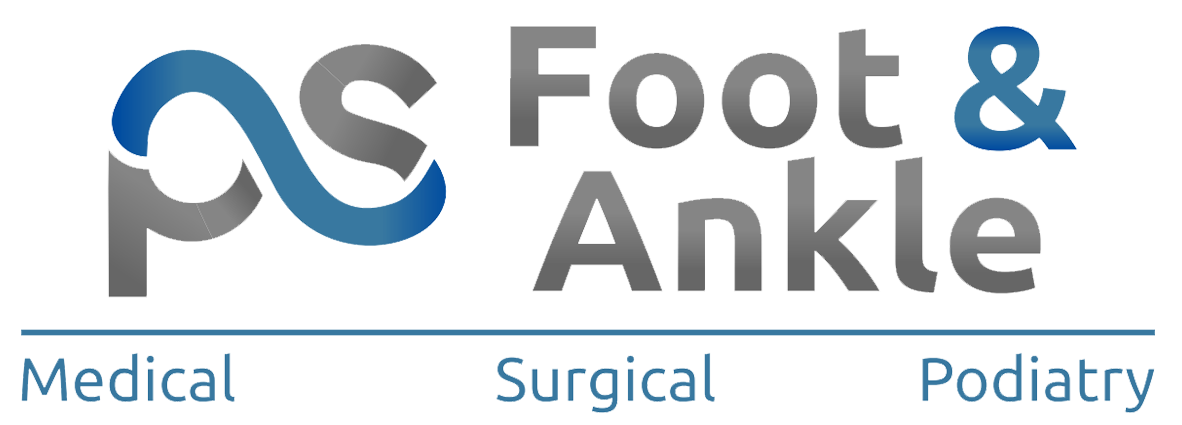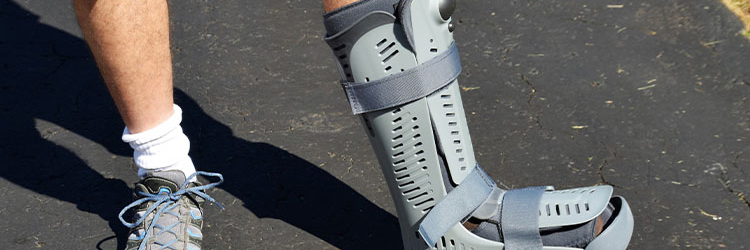Heel Pain
What causes arch and heel pain?
There are several possible causes of generalized arch and heel pain. This type of pain affects nearly 2 million Americans a year and is a common condition among our paitents. Some of the most common causes include:
- Plantar fasciitis: This is a condition that occurs when the plantar fascia, a band of ligamentous tissue that runs along the bottom of the foot, becomes inflamed and irritated. It often causes pain in the heel and arch of the foot, particularly when standing, walking after periods of rest, or with the first step in the morning.
- Heel spurs: These are bony growths that can develop on the heel bone (calcaneous) and may cause pain and discomfort in the heel and arch as the stiffness of the plantar fascia causes traction.
- Flat feet or high arches: These conditions can lead to imbalances in the foot and cause strain on the arch and heel.
- Overuse or injury: Repetitive activities or trauma to the foot can cause inflammation and pain in the arch and heel.
- Arthritis: Certain types of arthritis, such as rheumatoid arthritis and osteoarthritis, can cause pain and inflammation in the joints of the foot, including the arch and heel.
- Nerve impingement (Tarsal Tunnel): Pinched or compressed nerves in the foot can cause pain and discomfort in the arch and heel.
Treatment for arch and heel pain will depend on the underlying cause and at times it is difficult to attribute only particular etiology to the condition; this type of condition is often an influence of several of the above listed factors.

What are conservative treatment options for plantar fasciitis ?
There are several conservative treatment options for plantar fasciitis, which may help relieve pain and promote healing. Some of the most common treatment options include:
- Rest and ice: Taking a break from strenuous activities that cause pain and applying ice to the affected area can help reduce inflammation and relieve pain.
- Stretching exercises: Guided stretching exercises for the calf muscles and plantar fascia can help improve flexibility and reduce pain.
- Proper shoe gear: Wearing shoes with good arch support and cushioning can help reduce stress on the plantar fascia and provide additional support.
- Orthotic devices: Special inserts or pads can be used to provide additional support and cushioning to the foot.
- Night splints: Wearing a night splint can help stretch the plantar fascia and calf muscles while you sleep, which may help reduce pain and promote healing.
- Physical therapy: Working with a physical therapist can help you develop a customized treatment plan to address your specific symptoms and needs.
- Nonsteroidal anti-inflammatory drugs (NSAIDs): Over-the-counter pain medications such as ibuprofen or naproxen can help reduce pain and inflammation.
Most people fare well with conservative treatment modalities. It is important to note that while these treatments may provide relief for symptoms, they may not be able to completely cure plantar fasciitis. In some cases, more aggressive treatments such as corticosteroid injections or surgery may be necessary. Further imagining such an MRI may also be indicated to identify the condition of the soft tissue.
It is important to discuss your medical condition and make an informed decision about your treatment. Come in for a consultation at PS Foot and Ankle in Bridgewater, New Jersey and together we can create a personalized individual plan.
What are some regenerative medicine options for plantar fasciitis ?
Regenerative medicine options for plantar fasciitis involve using biologic agents to promote healing and tissue regeneration. These regenerative medicine options are continually being studied with regards to their efficacy but much of the medical community has seen promise in these modalities helping with heel pain.
What are surgical treatment options for plantar fasciitis?
Surgical treatment for plantar fasciitis is usually reserved for cases where conservative treatment options have failed to provide relief, and the patient is experiencing severe pain and reduced mobility. Some of the surgical treatment options for plantar fasciitis include:
- Plantar fascia release surgery: This surgery involves partially cutting or releasing the plantar fascia ligament to relieve tension and reduce pain. It is usually performed as an outpatient procedure and can be done using an open or endoscopic technique.
- Gastrocnemius recession surgery: This surgery involves lengthening the calf muscle by releasing part of the gastrocnemius muscle to relieve tension on the plantar fascia.
- Nerve decompression surgery: In some cases, compressed or irritated nerves in the foot can contribute to plantar fasciitis pain. Nerve decompression surgery involves releasing the affected nerves to relieve pain.
- Tarsal tunnel release surgery: Tarsal tunnel syndrome is a condition where the posterior tibial nerve, which runs along the inside of the ankle, becomes compressed. Tarsal tunnel release surgery involves releasing the nerve to relieve pain and improve mobility.
- Endoscopic plantar fasciotomy: This is a minimally invasive surgical technique that involves making small incisions and using an endoscope to release the plantar fascia ligament. This procedure can done on an outpatient basis.
It is important to discuss the risks and benefits of surgery with your doctor to make an informed decision about your treatment plan. Come in for a consultation at PS Foot and Ankle and we can provide a personalized individual plan. Treating heel pain is truly an individualized approach!






